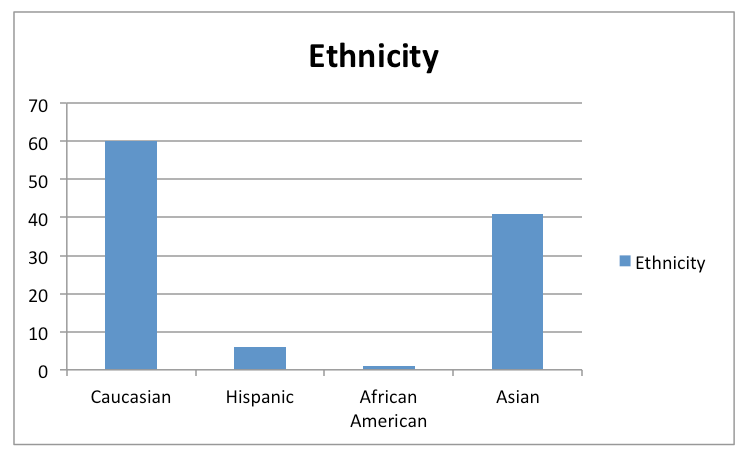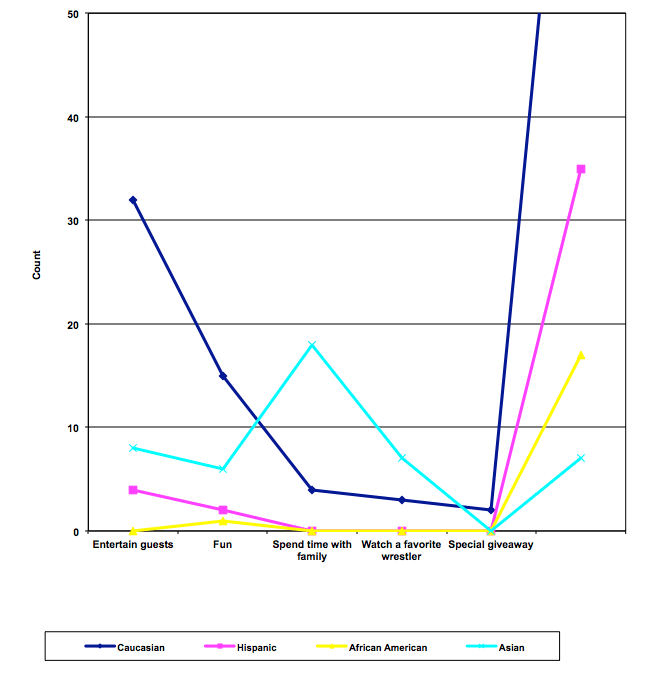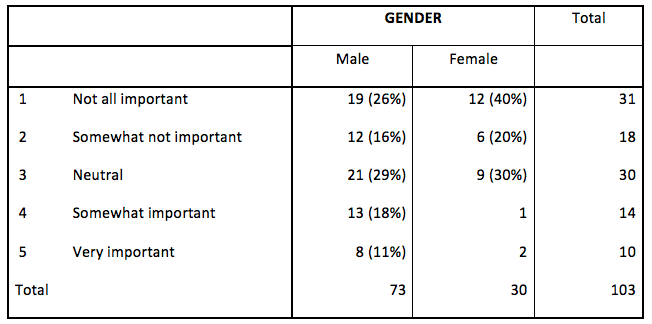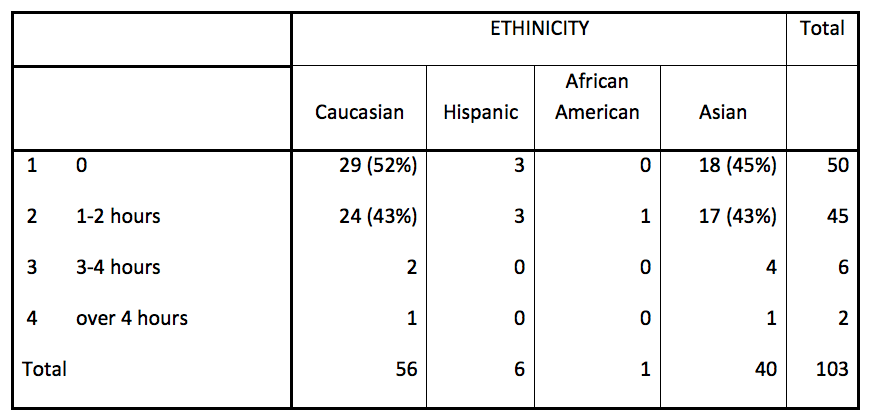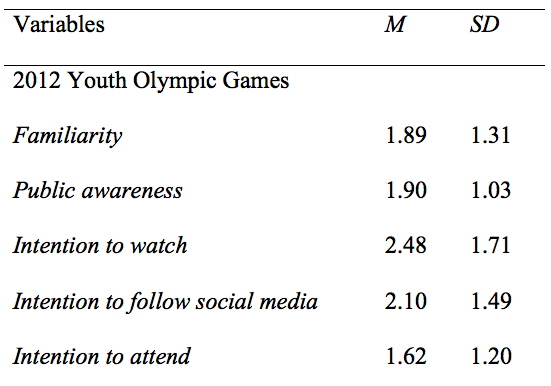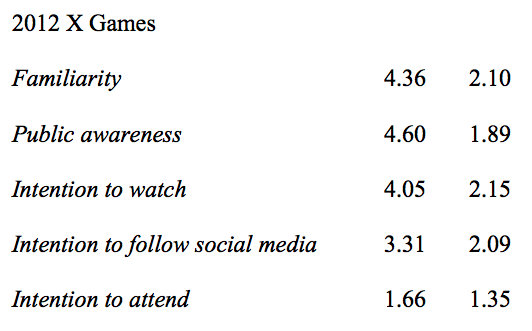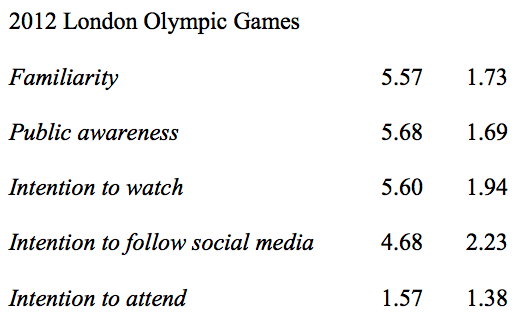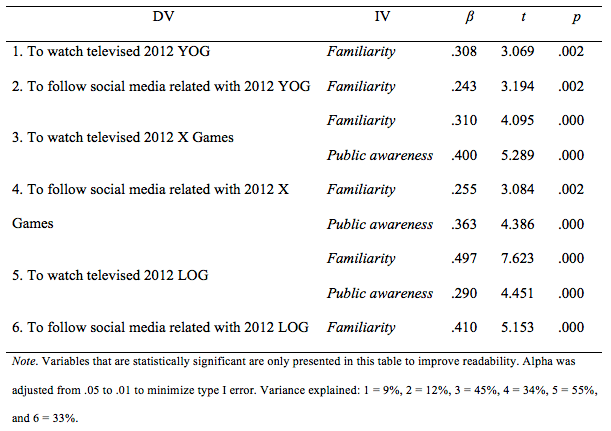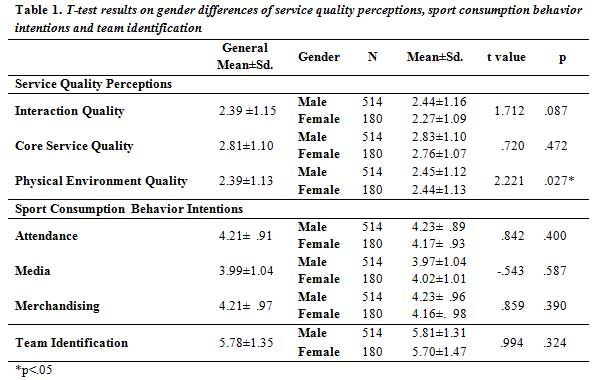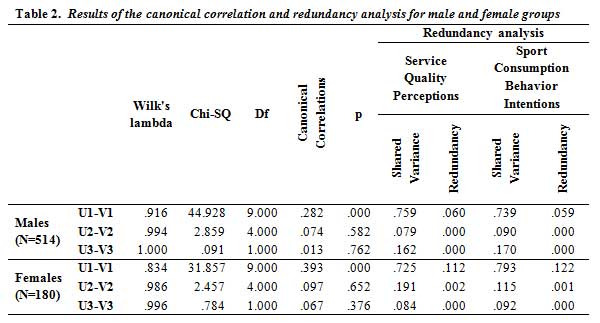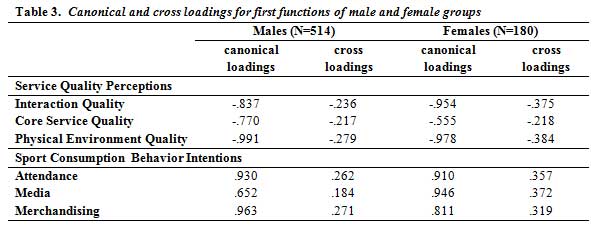Submitted by Richard Cheetham MSc, University of Winchester
Abstract
The research recounted the personal journeys and experiences of individuals who had undertaken and completed a Desert Marathon race, with specific focus on the reasons behind their participation, their race experiences and how the race had subsequently impacted upon their lives. The lack of a comparative analysis of these individual personal race accounts formed the rationale behind this research. The objective was to achieve a greater appreciation of what drives those to challenge themselves in such harsh and high risk environments. The eight runners interviewed all sought a challenge beyond that of the normal marathon distance and one that would require very diligent training ‘rituals’… The very personal reasons ranged from using the race to seek adventure, to grieve, to “make people sit up and take notice” and to experience and conquer an event of such magnitude. The recollection of the race and the months that have since passed, highlighted the impact on each of the runners. This impact showed changes in their outlook on life, a greater self-belief, and a “greater respect for humanity.” They had become invigorated by the experience and in some cases, there was a continued pursuit of the next ‘arena’ in which to test themselves as well as making enduring friendships with those they met along the way.
Introduction
In the words of Dean Karnazes, Desert and Ultra Marathon runner who once completed 50 marathons in 50 states on 50 consecutive days, and author of Ultra Marathon man: Confessions of an all-night runner.
I run because long after my footprints fade away, maybe I will have inspired a few people to reject the easy path, hit the trails, put one foot in front of the other, and come to the same conclusion I did: I run because it always takes me where I want to go. (Karnazes, 2005, p.276)
The ‘culture’ of ultra-distance running has inspired a number of autobiographies from those who have found that they have a story to share of their adventures, heartache, drive and conquest of distances and terrains beyond ‘normal’ recognised running / endurance events. Dean Karnazes is one of those runners. Individuals’ life changing circumstances have led some to immerse themselves in the raw beauty of the long distance trails and the open road. They have entered a previously unknown world of suffering, unchartered territory of heightened physical and mental demands, and yet also one that embraces obstacles set along the way. It was these stories and the author’s own experience from the 2010 Atacama Desert Marathon that inspired this narrative research into this specific aspect of ultra-marathon running among those who set their goal to triumph in completing of one of life’s most difficult endurance challenges.
Extreme Running
The emergence of ‘extreme’ running as a new sports genre has seen races on all five continents run across deserts, along mountain ranges, and through dense jungle. What qualifies these as extreme are the length, terrain, and altitude; as well as extremities of heat, cold, isolation and remoteness. They demand physical and psychological strength from the participants and “extend them beyond the norm of running experiences” (McConnell & Horsley, 2007, p.10). The standard format for desert ultra-marathons is to require the individual to complete six marathons in 6 days, carrying all their equipment and food. It is only water, tents and medical support that is provided.
The locations for the races include the Sahara, Gobi, and Atacama deserts, as well as Antarctica (often referred to as the ‘last wilderness’). Runner and author, Robin Harvie, refers to these as the “theatre of the wild” (p.38) in his book Why we run? The challenge of long distance running goes beyond a simple calculation of mileage and often into a psychological territory unknown to most. It is therefore an event that takes the runner to “the extreme frontiers of the environment and their own physical capacity for endurance” (McConnell & Horsley, 2007, p.10).
An early insight into the appeal and demands of these extreme environments is given by Polar explorer Richard Byrd who wrote in 1938 of the appeal, the dangers and the challenge in his book ‘Alone’ long before they were used for endurance running events.
After gazing at the sky for some time, I came to the conclusion that such beauty had been reserved for remote and dangerous places, and that nature has good reasons for demanding special sacrifices from those who dare to contemplate it.
These sacrifices would require the runners to show thorough preparation and discipline, little room for error in an event that has claimed lives through dehydration and sheer physical fatigue.
And so it is from these desert cauldrons that emerge the individual race stories, their untold personal journeys that often begin beyond the start line and continue past the finish. It is the recollections which give an insight into the appeal of the challenge, the one that lures them into the desert, to endure such hardship and to be rewarded by such an achievement. With this article the author hopes to not only learn from the runner’s narratives, but to convey a sense of appreciation for the participants’ personal motives, barriers and doubt that were overcome in pursuing their goal of running across, in this case, the Sahara and Atacama deserts.
Author and runner, Billy Isherwood, provided perhaps one of the only detailed personal accounts of such a race when he completed the 2006 Atacama Desert race. It begins with an account of his battles with alcoholism, drug abuse, and the domestic violence he experienced during his childhood. Yet at the age of 54 he crossed the finish line after 250 kilometres of running through the unforgiving terrain and climatic conditions. This autobiographical account of his life, and how he arrived at the start line of the 2006 Atacama Desert Marathon, provided a story that was to partially influence the rationale behind this narrative study, as it detailed his journey to the race, his race account and the transformation since. Karnazes (2012) and Zahab (2007) have described their desert race accounts, but in among a collection of other races. The aim of this study is to collate and compare narratives from those competing for the first time, to achieve a greater appreciation of what drives those to challenge themselves in such harsh and high risk environments.
This research began with a review of a number of autobiographies and selected texts surrounding ultra-marathon runners and endurance running. This was coupled with the autobiographies of triathletes, Richard Roll and Chrissie Wellington. The experiences from this variety of ultra-endurance athletes helped to form a backdrop to the work and a basis for the direction of the interviews.
Ultra marathon runner, Robin Harvie (Harvie, 2012) produces an insight into his running motives and explains that the only way to truly understand ‘the why and your own why’ is to take part in these events. He states that the race changes an individual beyond their initial motivation and that “to really know where the road leads, is to take that road yourself” (p.4).
Robinson (2011) provides a starting point for the research in terms of accomplishment and for some, the need for self-actualisation. Many people “never connect” with their true talents and subsequently “never know what they are really capable of achieving” (p.xi). For Marshall Ulrich, who ran across America at the age of 57, it was the accomplishment, not the pursuit of “high prize money or stadiums of adoring fans” (p.17). For Scott Jurek, a world renowned ultra-marathon champion it was wanting to “pry myself open going beyond the body beyond the mind” (Jurek, 2012, p.224). Krissy Moehl, twice winner of the Ultra Trail Mont Blanc (a 100 mile race in the Alps), also speaks of the accomplishment of “pushing your physical limits” (Moehl, cited in Powell, 2011, p.2). She refers specifically to the emotional responses that such challenges evoke aside from those physical boundaries that are realised. Multiple Ironman Triathlete, Chrissie Wellington (2012), refers to a “contest against the race itself” (p.1) regardless of fellow competitors.
Dean Karnazes identified that time spent running allowed him space for “finding peace” (p.276). Dietz (2011) recognises that in ultra-marathons the time out running and away from work, family, and finances rarely happens and therefore allows “a holiday for the mind” (p.42). Trail runner, Boff Whalley states that “We all of us run … To give our bodies a general sense of purpose – creating, in this hurly-burly world, space to think, space to breath” (Whalley, 2012, p.5). He refers to a connection with the environment – the relationship between “the earth and our feet” (p.3). His focus was on running away from normal chosen routes and exploring challenging paths with harsh terrain, unpredictable weather and undulating, demanding wilderness.
Andrew Murray who ran from the far north of Scotland to the Sahara desert (Murray, 2011) was driven by the endeavour, for a charitable cause but also the appeal of the locations he would visit along the way. The desert marathons are organised in places rarely visited but, it could be argued, in some of the most extraordinary destinations on earth. Dietz (2011) also highlighted that the running became an excuse to travel to places around the world. Karnazes (2005) was also led by the appeal, the freedom to explore and to experience the environment for real.
Some people may have fear of living in a comfort zone of neither risk nor adventure and a fear of living from “meal to meal” which Jim Schekhdar (Schekdhar, 2002) saw as his inspiration to break out from ‘normality’ and row across the Pacific in 2001. Or as Reid (cited in Austin, 2007) comments that there is a real need to achieve and challenge ourselves, to “do something with our lives” (p.120) and that this can be achieved through running. Maybe it could be the fear of simply “walking along the corridors leading to the lives of our parents” (Harvie, 2010, p.74) and therefore exist with the confines of ‘normal life.’
An analysis might reveal it as simple as runners looking for the next step, the further distance as they draw from their previous accomplishments (Dietz, 2011). One marathon may not be enough to provide some with the satisfaction after completion and that coupled with a new inner belief that there is more ‘in the tank’ which leads inevitably onto higher stakes. For some however, their very existence is defined by running (Harvie, 2010). Described by Karnazes (2005) as a very simple “primitive act” (Karnazes, 2005, p.276).
Selected comments from these autobiographies and ultra-endurance focussed literature show some of the deeply felt emotions and motivations. These are mere ‘snapshots’ of their stories.
Alongside these individual perspectives from endurance racers, a specific contextualised series of narratives from desert runners will add to and enhance the breadth of studies. This research was therefore designed to be an innovative research project within a developing specific area of athletic performance. To accomplish it I use narrative enquiry where “people’s lives are storied” (Savin-Boden & Major, 2013, p.227). Hopefully this will not only enable a more sophisticated academic understanding of the extremes of human sport, but it will provide a resource for those wishing to compete in such events, beyond what training manuals offer. As Parker (1978) sought to understand in the novel ‘Once a Runner’ there too was a desire to “capture some of the bittersweet beauty and heartbreak of the only all-consuming quest for physical excellence” (p.274).
Method
This research used a narrative research methodology which, through a study of research suitability, has been regarded as the most relevant and effective for understanding the individual race motives and race recollections (Savin-Boden & Howell Major, 2013, Jones, Brown, & Holloway, 2012). The study aimed to recount the experiences of individuals and therefore “focus on people’s perceptions and experiences of the world they live in – and what it means to them” (Jones et al. 2012, p.113) and to show an understanding of that experience (Clandinin & Connelly, 2000). Schultz (1964) emphasises that this is the world as viewed by the individual and not constructed by the researcher who should act to safeguard any misinterpretation of data. The study aimed to truly reflect first-person accounts of life experiences, which is essential in the use of narrative research and allows the individuals voices to be heard (Cresswell, 2007). The research sought to provide a richness of data that eight individual accounts of desert races can achieve. It was a description of what they underwent and how they lived through it – “the essence of the experience” (Cresswell, 2006, p.58).
Essential to this study, was the ability to recognise themes that may emerge, commonalities of the runners backgrounds and the race impact for example, and also to identify and highlight the very personal nature for undertaking their journey and encounters along the way. The runners developed a trust with the author that was built on ensuring they were represented honestly and accurately throughout.
Sample
A selection was made of eight runners (n=8), from 28 to 52 years of age, who all agreed to an interview, four female and four male. They were chosen through convenience from a number who had competed with the researcher in the Atacama Desert marathon in 2010 or from contacts of those participants and who had raced in other locations. Some of these have completed desert ultra-marathons since 2010 in the Sahara, Atacama, Antarctica, and Gobi Deserts.
The relatively small sample size is consistent with narrative research of this kind as Holloway and Wheeler (2010) suggest homogeneous groups can require only 6 to 8 participants. The selection of participants is also consistent with sampling recommendations by Morse (1986, 1991b) who encourages the choice of interviewees to be based upon their experience, knowledge and ability to articulate (in this case, their race journey). This form of purposive sampling was supported by the shared and “specific phenomenon” (Jones et al, 2012, p.35; Mayhut & Morehouse, 1994) that is recommended in qualitative study.
The interview procedure
All participants were interviewed individually at work or home in locations chosen by them. Four were interviewed via Skype, as they lived in the United States, Hong Kong and Australia. By their nature qualitative interviews are often unstructured (Jones et al, 2012). They use open-ended questions which is a primary consideration within qualitative research (Mayhut & Morehouse, 1994; Gratton & Jones, 2004). The aim was to allow the participants to describe their race experience in as much detail as possible and interviews lasted between 45 minutes and an hour but there was no time restriction placed on them. It was essential that the interviewee described their experience in as much detail as possible and felt they were encouraged in some way to lead and control the interview, recognizing that they were the expert of this very particular journey.
In this case, however, the interviewer has also completed a desert Ultra-marathon and this proved to be an advantage in the interview process as the interviewer was able to further explore their encounters with greater empathy. This may be a question of guidance as opposed to direction.
Interviews of this nature have been described as a “conversation with a purpose” (Maykut & Morehouse, 1994, p.88). As a result the questions designed and selected were guided by the subject content and also by Patton (1990) who used six types of questions. Selected from these, were themes based around experience, behaviour, feelings, background, sensory and opinion. The recounting of the race story from a personal perspective focussed on pre-race, race, and post -race experiences within the context of a personal journey.’ Their feelings, thoughts and motivations, as well as the impact that the race completion has subsequently had on them, shaped the interview process.
Data Analysis
The gathering of the stories from the interviews followed the approach recommended by Maykut and Morehouse (1994) in which what is meaningful to the participants guides the analysis, and not that which is pre-determined by the researcher. Therefore data collected aimed to represent those participants in a “coherent and meaningful way” (Hunter, 2010, p.44) by ensuring that the information was given order and structure in the analysis stage. Following each interview the audio tapes were transcribed and coded using thematic analysis (Gratton & Jones, 2010). Thematic analysis led to the selection of significant emerging themes that the participants identified, not those deemed worthy by the researcher; while not losing the reconstruction of the desert race journey. These emergent themes were identified in the results section. The analysis of the interview transcripts enabled a more meaningful presentation of the interviews and was considered in such a way that when read by the participants they would feel that they still ‘owned the story.’
Discussion of Results
Individual running history
The initial question aimed to gather a running history of each interviewee. This showed that they were not ‘well versed’ in the demands of endurance running in such harsh conditions and would have to acclimatise and adapt to the sheer volume of training and preparation required. It proved to be far in excess of that required for anything experienced before. Lucy confessed that before the Sahara Desert Marathon, “I’d never been a serious runner.” All the participants had completed a marathon before the race began, in some cases as part of their training and in others something that had been part of their running history.
It was felt important that, in initially focussing on this aspect of their stories, that the reader would be made aware of the running history of the group in order to put the accomplishment into a better context. The findings showed variety in their pre-desert race running accounts.
David who had competed in two Marathons and adopted an increasingly more serious approach to his training to the point where he wanted to find an event that allowed him to “incorporate all the training.” His father had completed “11 or 12 London Marathons” and he had grown up within an environment where “he’d (his father) go out on Christmas day or whenever…we just accepted it. Ross, who had “accidentally done a full marathon” three years before Atacama, played rugby and kept general fitness as it was “something I have always worked on.” He also confessed to not enjoying running and felt “I don’t think I’ve got the right body type.” Ricky who had played professional baseball where running formed part of the training programme and except for several shorter distance events including five and ten kilometre races “I had never really done anything formally and no marathons.”
Andrea had “sporadically” done some running at High School and College including cross-country but her father had “been a life-time runner and has done like I think around fifty marathons.” Andrea recalled a moment when “I gave him a call and said if I do a half-marathon will you come and do it with me?” This had come when she had taken up running again after a period in her twenties she had been “a really heavy smoker.”
Sam indicated that while she was always “an active person” despite taking part in several half-marathons stated “I definitely haven’t been a very good runner.” Marilena had completed six full marathons including Hong Kong, London, and one in Uruguay. She had a great deal of running experience; as a result the training application alone would, in itself, help her with the preparation for the Atacama Desert race.
Tremaine referred to the military CFT (Combat Fitness Test) as the only real specific running he had done while in the British Army but had no real interest in it outside of this form of ‘compulsory’ training.
It is this analysis that gave a starting point for the research. This showed that these successful desert marathon runners had no experience of extreme endurance events prior to that first day on the start line. A race start that would see them carry up to 12kgs each day of food, basic medical resources and other essential supplies to survive the extremes of heat (daytime temperatures exceeding 40 degrees Celsius) and cold ( temperatures fell to near freezing at night). And so it seemed inevitable to begin the questioning with – why choose something so extreme?
Reasons why the participants chose to race across a desert.
The discussion then moved onto ‘the why’, the why something so extreme? And it was this question that unearthed some common themes. The level of extremity should not be underplayed. This was highlighted in the 2011 Gobi Desert race where one runner died. The need for thorough preparation was essential and that every aspect of the race had to be considered. Sam described “taking off those rose coloured glasses.” The desert was to be an uncompromising and unforgiving environment. Tremaine said he wanted to find something that was simply on the “borderline of lunacy!” For many this may be regarded as ‘lunacy’ but what transpired were the deeply personal accounts of ‘their why.’ Goals (such as this one) give a sense of purpose – “a real sense of being” (Pink, 2009, p.137). Ricky said “there always has to be a purpose…. a really strong why.” For him one of the reasons was on his way to work, “it was walking the tube (London Underground) and being out of breath…..its’ like I am gonna make a change.” The other answers to this question were “as individual as the runners themselves (Ulrich, 2011, p.44). Andrea had been “enthralled” by the feats of Dean Karnazes, ultramarathon and desert runner. She initially wanted to volunteer on a desert race but was encouraged by a race organiser that she could complete one and recounted, “he was like listen, I can tell when people are ready and it’s not about how far you can run, its’ really about your mind-set.” Andrea had reached a point in her life when she wanted to see that “I could really do something” to test herself.
The challenge itself – extending boundaries and beyond a marathon
Initially what became evident was the runners reference to ‘the challenge’ itself, the test of oneself against the elements and to find the next step from the marathon. It seemed that they were all looking for the next step. Ultramarathon runner Ray Zahab (cited in Ulrich, 2011) believes that if you can run twenty six miles then your body can carry you further, “the only question is can your mind go the distance” (p.144).
All of those interviewed were drawn by the need to see what was within their grasp, physically and mentally and that the desert race offered up a chance to demand of them to reach a limit never previously realised. David had read about the race as he had been actively looking for “the next thing” and had sought out an extreme race event. For him it was “something ….you make a commitment to …and that means you make sacrifices.” Wellington (2012) refers to what the intensity of Ironman taught her, “our limits may not be where we think they are” (p.274) and this was echoed. The need to push their boundaries, to apply themselves, unaided (Tremaine, “it’s just you and the desert,” Marilena, “just the thought of being in the open, self-supported”) to take on something dramatic and this captured their imagination.
Ross, who had experienced physical hardship due to altitude sickness when climbing Mount Kilimanjaro in 2007, had a philosophy of “not if but how” when he was presented with the details of the race by David via an e-mail in early September 2009. He exhibited a clear determination that in order to succeed one had to embrace the sheer scale of the challenge and reach “that boundary of probably pushing yourself to the limit.” He went on to say “it’s not how fast you run but how much guts you have.” Murakimi (2009) believes it is the pain (and the inevitability of it) which is accepted and that it can give us a greater sense of being alive. Others agreed that there was something alluring about the pain.
Having watched previous desert race videos, Marilena was aware of the likely suffering and was not in any way deterred but drawn in even more to choose the desert as her ‘arena’. “I saw suffering, going up and down hills and I thought that hmm that’s a challenge, I can do that. So I wanted to prove to myself that I can do it.” She also had a connection with her first race as her youngest daughter had been born in Chile and the “beauty” of Atacama had been the deciding factor on the choice of race and location.
It was important that the choice of extreme running took Ricky away from normal marathon events because for him, “What makes people sit up and listen is something more extreme,” “everyone’s done a marathon…for me “its’ kind of lost a bit of its’ shine.” He believed the attraction of this next level was “….discipline….commitment ….. Accomplishment, that’s what captures people’s spirit.” This was echoed by Harvie (2010) who felt that with the marathon distance (26.2 miles) “anyone can run a marathon given enough time” (p.269). Powell (2011) and Ulrich (2011) recognise the attempt to accomplish something so few have done as a motivational aspect in ultramarathon races. It is the thrill and excitement of taking on such a “mission” (McConnell & Horsley, 2007, p.11).
For loved ones
Lucy and Tremaine provided extremely emotive reasons for entering such an event. They had both experienced the loss of family through cancer, Lucy’s father had passed away in 2007 and Tremaine’s partner, Carla, had lost her battle to the illness at the age of only 31 in 2009. Lucy wanted to find a race that was something slightly different in order to generate interest for those wishing to donate to the charity she was running for (“raising money was my drive”) and also the race would help her to “put everything into perspective” since her bereavement. Tremaine had wanted to give something back to those who had cared for Carla, to do something “dramatic” and subsequently raise sponsorship in order to support a palliative care centre. He regarded the people who worked there and had cared for her as “saints” and not only did he wish to raise money but that the race would be his way of grieving. “You know in the middle of the desert, you’ve got no-one to talk to.” Both had been clearly deeply affected by their tragedies and it was evident the races (Lucy and Tremaine were to compete in four desert marathons in the same year along with Sam and Ricky) would allow them to deal with this part of their life. Scott Jurek, one of the most renowned ultramarathon runners said, “I ran because overcoming the difficulties of ultramarathon reminded me that I could overcome the difficulties of life, that overcoming difficulties was life” (Jurek, 2012, p.6).
For Tremaine, after all the anguish following Carla’s death “everyone fell to pieces” the desert race became a place that allowed him the chance to sort out “my own affairs.” It was “the best time to sort out my issues is when I am demoralised and broken down.”
Experience of the run
The journey offered each runner a starting point, as highlighted, from their first step along the route to the race and now that same journey moved to the next phase. The race itself was the next area for questioning. It is where initial fears, an almost inevitable suffering, emotions and individual coping mechanisms would all be unearthed.
Escapism
Beyond the chance to endure this feat of endurance the races provide times of isolation and solitude. There were times when runners experienced this and the interview sought to question what feelings this provoked among them. It aimed to garner greater details from the runners as to their race experience in terms of greater connection with their thoughts and to any appreciation of the environment they found themselves in. Heather Reid, Professor of Philosophy at Morningside College in Iowa, speaks of running allowing freedom, escape from the norm of daily living and away from “the herd” (Reid, cited in Austin, 2007, p.119). It offers a freedom and a removal of obstacles that limit the chance to ‘escape’ into a world “free of briefcase, cell phone and car keys” (p.118). When these freedoms are experienced how do individuals respond? Austin (2007) believes it is here that one can reflect on our lives and what is important to us. The questioning aimed to find how that freedom was recognised, appreciated and articulated. It was here that the ‘escapism’ enabled them to recollect feelings that show a greater connection with what they were doing and where they were. This was an uninterrupted space, away from outside distractions and ones that are part of or ‘plague’ our lives. The escapism that is “near impossible when modern life is defined by interaction” (Harvie, 2011, p.211). In this case the runners referred to the technology of contemporary life that does not afford us enough moments of ‘silence’.
Sam, Lucy, David, and Andrea referred to the “escapism” offered by the race. This referred to being away from normal work routines and into a challenge without phones and computers that would lead Lucy to show how much this meant to her, “I loved turning my phone off that was just a joy”… Andrea, “it’s been the only time in the last decade I don’t obsessively check my phone,” and “I don’t think I understood how disconnected from the rest of the world I would really be.” Sam reflected on similar experiences, “I put myself in high paced environments…….my phone is with me 24/7 and I am constantly checking e-mails.” With this hectic lifestyle came the “reward” of the marathon challenges, away from a world where in work her life was “crazy.” The final reflection came from David, who enjoyed being away from a life which appeared sometimes one of being ‘bombarded’ with e-mails, the internet”
Coping strategies
Endurance races provide an undulating ‘emotional terrain’ for runners. Zahab (2007) developed a “tunnel vision” (p.173) when trying to ignore the pain in his feet in the Amazon jungle marathon and allowed the “pure adrenaline” (p.174) to carry him through. Fry (cited in Austin, 2007) believes that running for the dedicated “is form of ritual suffering” (p.67). Harvie (2012) describes the suffering that is experienced and throws many into a pain “beyond comprehension” (p.73). And yet they also experience feelings that put this pain into some kind of perspective and deal with it in their own unique way. “I would live entirely in the moment………There was only one mission of putting one foot in front of the other” (Karnazes, 2011). Often there is the acknowledgement of its short-lived nature.
In her interview, Marilena described just how ‘dark’ things could get, “my feet were horrible…….I lost nine toenails” but “at least my suffering will be temporary……..that kept me going for sure.” Almost as inevitable partners inextricably linked are the moments here described as ‘moments of light and dark’ where the pain can give way to a time when the runner experiences a vivid moment of excitement that encapsulates all that is the adventure, the race, the encounter. They press on towards the light, towards that end goal lifted by what they could become and what they could realise. Ultramarathon runner Francesca Conte notes that at the Arkansas 100 mile race, “I always want, in every race to take the time to look up at the sky at night, because remembering how lucky I am matters more than winning” (cited in Jameson, 2003, p.152).
Ricky had suffered with horrendous blisters on both feet and had been vomiting during one of the stages. “We (a fellow runner who was with him on day 3) were in a horrible shape – that was a bad day.” A day that would find him out on the course for over 6 hours as he battled to cross the line for the end of a stage of the race. So how do you overcome these factors that could leave a runner struggling to carry on? Ricky continued, “You pushed through it, the pride, the elation of getting through and finishing that stage” and his drive to prove to others he could do it. One of those was his former Baseball coach at University who was always critical of him and doubted his abilities and to whom Ricky directed his anger: “I keep him in the back of my head…..and I imagined him watching me run this race. I’m going to prove you wrong because he’s a bastard. I wish he was listening to this.”
It was clear that each of the interviewees had their own strategy for these dark moments. Andrea had a key word, one that she would use when she was “hitting my lows.” She would “super-charge it with good thoughts…….charge it with good memories” and when those low points were experienced “I’ll say it (the word) to myself.” It was a case of “shifting” her thought process and it helped her through moments as on the third day when she had run out of water with five kilometres still to go. Water on the race was rationed each day. As Dean Karnazes pointed out when he participated in his first desert race, “Why ration water? I guess the organisers wanted to make it as authentic as possible. This is a race across the desert after all” (Karnazes, 2011, p.156). But this too could be a danger and Andrea was frustrated and angry but had turned this anger into “fuel, like it’s something that can move you on.”
David appeared very clear about his ability to cope with the times when he felt low either through fatigue or the pain of his worsening blisters. “I was never really that negative because I knew that everybody has their ups and downs.” He was able to break down the day’s route into sections where his aims would be to use the checkpoints as progress markers and goals. “I know that this is gonna hurt for the next 10k, but you can split that down.” Ulrich (2011) similarly learned to “compartmentalise my physical anguish…….how to strategize my races” (p.19 & 20).
Sam had injured her ankle even before the race had started and still travelled to the race. She had raised money for charity and was sponsored by a University in Australia. It had been a goal, “an absolute dream” and yet this initially appeared to be one that would stay as just that due to her injury in training just before the race. Her ability to turn potential disaster into achieving that goal was one that was built on reviewing how she could best complete each day.
So I decided to just walk it. I’m just going to do whatever I can to walk and even if I can only walk for the first one day, two days, I’m just going to make the most of it. I’ve never been to South America, so that’s what’s important to me, to really make the most of every moment I think that moment’s been the reason why I’m still running today.
It was almost as though her ‘dark moments’ had occurred before the race had begun and it enabled Sam to completely rethink her approach to the event. The walking of each stage for the first few days allowed her to take in her surroundings, to see things others may have missed as they pressed on across the terrain. “I found it a beautiful race.”
I was just wanting to make the most of it…….I had committed so much financially and …. mentally to get to the start line that I wasn’t going to throw that away by holding onto this idea that I would be able to run the whole thing.
Ross reflected on the charity he was running for although to help fend off the difficult times he was experiencing he spoke of “a bit of bravado” where there is a bit of it that you can’t go home and say I didn’t finish…..unless your leg was hanging off!” However he had been “so focussed, personally…..just progressing and putting your energy into that, otherwise I think I’d fall over and not get up.” He was also able to recall a time when the race became for him a moment of humour.
We were going across the salt flats where it was really rough, and it was a hazy heat, three sixty degrees and I just started cracking up. And I was just like this is …… bonkers like could not get further from reality, not reality, because it was reality, but from your day-to-day reality, and yeah I thought it was brilliant. Like couldn’t see another person and it was just like you know, that’s what you do it for.
Tremaine and Lucy had other emotions that influenced their coping strategy. Their recollections took on a very different slant. After her father’s death, Lucy and her sister, Camilla, entered the Sahara Desert Marathon and they had to split up midway as only Lucy was able to continue. At a checkpoint, one of the race doctors handed her a note passed to him earlier by Camilla. It had been written a while ago by their father, “I remember sitting quietly at the side of the camp…..bawling my eyes out because I was so tired.” The emotion, “the tears, the tiredness, I mean the whole thing was horrendous.” But this also enabled her to reflect upon why she was there and to change her thoughts “don’t be ridiculous, you’re raising money for people who are a lot worse off than you and that’s what kept me going.”
Tremaine experienced a great deal of reflection in the times of isolation in the race when “who do you talk to……your mind and soul has to dig up some serious questions.” The questions of regret related to being away from home when he was in Iraq and spending more time with his family surfaced when he was given that time to think “have a word with yourself.” And yet also occupying his thoughts were “you know she would be proud of me and what I’m doing you know.”
The impact of the race.
After all the miles, all the previously untapped thoughts and feelings, the physical peaks and troughs, the terrain and the temperature extremes it was all over but had it changed them? For the participants in the study at least this was the end of one journey and the start of another.
Friendships
One of the most significant changes for the participants was new and some enduring friendships, the connection with other runners from around the world and in one case, friendships that helped to change opinions. For Marilena, “I loved the way you mixed with so many nationalities, there were beautiful people; never seen them before and maybe you will never see again, but that week they were your closest friends and there was that rapport.” Tremaine had changed his views on those he had met away from his life in the military and from one that he felt instilled stereotypes of those in civilian life. He had experienced so much and identified so many things that had changed for him. Twenty two years serving in the military had left him ‘disconnected’ to civilians and now “I wasn’t a hate civvies kind of soldier that I used to be.” He highlighted what others identified as a camaraderie and respect among his fellow competitors: “No one judges you, the fit ones respect the slower ones, the slower ones respect the fit ones. It’s just like an aura around people.
Ross acknowledged it was “…..the friends that you make and the memories that you create there…..I don’t think it changed my life, but it’s certainly made it a lot richer.” With all the wealth of memories that arose Sam highlighted “what I take away from it (the race), from the journey of running, particularly in those early day races, were just the friendships I made”. Andrea found “one of the unexpected treasures of the experience” was “that you had to like earnestly connect with people in a way that you don’t get to in your life.” Murakami (2009) commented that one of the real pleasures of running has been the people he has met and who have encouraged him along the way.
New self-belief and new challenges
Six of the eight ventured back into other deserts to race and run across – these were Ricky, Lucy, Sam, Marilena, David, and Tremaine. For them the challenge had given them a change in their self-belief through this first accomplishment in an extreme endurance event. Lucy, “I do take on challenges slightly head-on now, because I, you know I‘ve put my body through some extreme situations.” The interview had taken place two weeks after she had summited Aconcagua in Argentina, which is just less than 7,000m high. “I think, I know I can, I know I can do with, like physically I can do more.” She continued to reflect on her thoughts to what lay ahead.
I’d never thought of running a hundred miles around Mont Blanc or round Mount Fuji…….now it’s perfectly normal that I am doing that at the end of April. It’s just ….you live in a tent and you get used to….a sleeping bag for three and a half weeks on a mountain or a week in the desert with ten other people, and that’s perfectly normal and you don’t bat an eyelid.
Jurek (2012) believes that runners are transformed by these challenges and that they can “illuminate the path leading to something larger than ourselves” (p.227). It was evident that the race had a transformational and profound effect on all the interviewees both during and after the race. Marilena had “always tried to challenge (herself)” and now
So when I crossed the line, ah, it’s just amazing, you look back and think wow, I did that 250 kilometres, six days and you did that. It shows what you can do if you put your mind to it.
David has since completed the Sahara Desert Marathon in 2012 and one where he felt this experience helped him in his approach. He finished tenth overall in his second desert race, in Atacama he placed outside the top fifty. “I think you definitely come back with a different mind-set, just on your own ability to take on a challenge and achieve it I think.” He has actively “sought out more” events like this because “your outlook changes.” Since 2010 Ross has continued to seek out running challenges and in 2012 completed the 100 mile footrace called the Centurion in just over 24 hours. Sam had reached a new “physical barrier” in terms of how hard she was able to push herself. This was one aspect identified by many of the runners before the race. “We’d never at home, would have considered doing a third marathon (of an eventual six)……that’s quite amazing.”
Sir Steve Redgrave, five time Olympic Gold medallist, asked himself the question upon retirement if he would go through all the sacrifices and training again; he felt he would.
“It was a privilege, a quest. It was a challenge and I have always been inspired by a challenge” (Redgrave, 2009, p.300). For those who did not draw a line at the end of their first extreme challenge, these words seemed to reflect what subsequently happened as they chose to confront another test of human endurance.
A chance to reflect
For all the runners the race had changed their thoughts about how they viewed life as well as themselves. For Andrea “it just made me think, well you might as well try more things” and was “less afraid to fail.” Since the Atacama she had been able to take more risks in her life and had moved to Tahoe from San Francisco “I would have probably never have made that decision if I wasn’t there (in the desert).” Ricky, who has since become a motivational speaker, working with charities and young children as a direct result of his completion of four desert marathons in the same year believed that “Nothing ever happens to you by saying no…..the world has just opened up by saying yeah I’m gonna do that race and its changed my life and (with it) from many different….perspectives.” There was a greater appreciation of certain aspects of life from both David, “I don’t think you worry so much about the bits and pieces, the things that can sort of clog up and take up your time, don’t actually matter or mean anything!” And Marilena, who was able to take a step back and appreciate her surroundings, her environment, “I see every beauty, I see a tree and I see the colours of the tree that maybe other people don’t see.”
Tremaine had come to terms with the loss of his partner Carla and was looking to the future. “I’ve come out the other end.” He was thankful for the race experiences in many ways and that “it’s finding my footing, and I would have never achieved that because I could have quite easily have been bitter.” Despite injury forcing him to abandon the Sahara Desert marathon he was able to complete two further races in the Gobi and Antarctica. “What I did discover on that first desert race was my respect for humanity and I really found some people that you know actually give a damn about everyone else apart from themselves.”
Work can deprive people of challenging experiences which give “effort a greater meaning to life” (p.120) and ones that provide a greater personal engagement (Pink, 2009) If this is to be achieved then it was through something providing a very different form of accomplishment. For Andrea, “I did it for nothing but the sheer aspect of seeing like that my life was really monotonous at the time. I‘d wanted to see if I have almost nothing for a week. Really what’s it gonna feel like for me and how I am, what does that actually change about me.” With Ross, the experience and “the adventure more than the race” was very different from his life as a graphic designer in London, “I sit in a studio looking at a screen for sixteen, eighteen hours, you know some days.” Sam’s achievements gained through running have led her to share those experiences in her role as an inspirational speaker. With future races she now tries to; “Align them with charitable causes, which is what I am most passionate about to be honest, probably even more than the running itself. …the capacity for it to you know really affect others and influence change.”
Final thoughts
The interviews concluded and an opportunity for the eight runners to describe what they would say to those contemplating taking part in, what has been described as. One of the toughest endurance races on earth. Words that they felt would help to prepare someone for the ‘experience’ they had all shared.
For Ross “just know that anything is achievable…..you’ve got two feet, heart, and lungs and off you go.” Lucy felt similarly that “go for it one hundred percent……it’s an incredible experience.” David wanted to highlight that this was not an exclusive challenge for elite runners. The race contained “people from all walks of life…….you can’t judge a book by its cover.” Ricky enthused “the race was epic man that was absolutely epic.” Andrea considered the experience of challenging herself and realising her potential to “see how far I could really push it” had made her feel the race “was very special, very special to have done that.”
Marilena recalled an “amazing journey….the whole journey was an amazing experience, you don’t need much in life……being with yourself sometimes and (with) nature.” Sam was able to put thoughts into a context of the ‘challenge’ by reflecting on her family background to put it into more perspective. Her father had polio as a child and her mother had “never run in her life” and so she wanted to recognise that “I had done an incredibly physical challenge….I succeeded more because of my mental capacities than my physical capacities.” The immediate impact for Sam when she finished her first desert race was evident, “I was just so happy, I felt so blessed to have finished it. “I was elated….it’s like my body was healed.” This absolute optimism and positivity……feeling fortunate to be there, I was definitely a stronger person when I finished the race.”
The final words were from Tremaine who wanted to ensure that people knew the risks and not to do it “off a whim/” The real question is “…what’s your fundamental reason? You know if it’s for fame and glory, don’t bother. The only race you have is to challenge yourself.”
Discussion
The race journey showed from starting out on this adventure the ‘line in the sand’ at the finish was merely a part of a tapestry of riches and rewards for each of the desert runners. Austin (2007) refers to runners experiencing self-discovery, a time where solitude allows reflection and that “we learn something about ourselves” (p.xii). Their learning was something that they all identified in the conversations and each was as individual and personal as the reasons they had set out on the path to adventure in the first place. The path they followed was transformational not only after but at points along the 250 kilometres of desert trail. Their stories highlighted what can be achieved when mind and body act in unison to surpass what has gone before in our lives in one of the most demanding of arenas.
There was a changed belief about themselves and having such a purpose in the race provided them with a fulfilling activity that gave them their own reward. Pink (2009) discusses a relationship between a challenge that is neither too easy and yet too difficult. With that step being beyond one’s current capability which “stretched the body and mind in a way that made the effort itself the most delicious reward” (p.115). The effort in each of their stories, proved worthwhile in many ways from the charities that they ran for to the people they met and the places they saw. Their ability to recall such vivid moments even when time had passed (nearly three years) since they finished the race, highlighted the impact of the race. These vivid recollections showed such detail that, one could argue, the journey had a deep and profound effect. Carol Dweck, Professor of Psychology at Stanford University believes “the view you adopt for yourself profoundly affects the way you lead your life, your mind-set” (Dweck, 2006). It is clear the race affected each of the runners in terms of how differently they viewed themselves, if not openly in the interview but by the directions their lives took after leaving the desert.
Conclusion
If running is to be a metaphor for life as Whalley (2012) comments, then in this case the desert was to provide that stage. Running in “straight lines along city streets bears little resemblance to life” but venture away from these and the trails will reflect the “life twists and turns” (p.266, 267). When one takes the leap of faith away from the confinement those streets impose into the unpredictable twisting and tortuous routes that desert running is, then this truly reflects what living is really about. Roll (2012) believed that when deciding to test ourselves there is a “new path waiting for (us)” and dare to “take that first step and then (it will) show us who we really are” (p.125).
Some have continued to run, others have found a peace in the accomplishment and so the desert was hardly to be a desert at all. It was to be a treasure trove of memories, of new and life-long friendships and greater self-belief. “Our past makes us” (Jurek, 2012, p.264) and for these runners the past has shaped their future.
Applications in Sport
The heightened interest in extreme endurance events over recent years has made it possible for many people to achieve success in events they otherwise thought impossible. An insight into the experiences of a few of these who chose to venture into such unknowns can create an awareness of the impact such events can have on individuals. This study aimed to explore outside physiological and psychological research parameters and provide those considering embarking on a similar journey with simple narratives that could inspire them to realise what is possible and what can be realised.
Acknowledgements
I should like to thank the eight participants who willingly shared their stories with me so openly and honestly. They not only provided me with their experiences but also proved inspirational. I should also like to thank colleagues for their interest and encouragement throughout this research process as well as the University of Winchester for the financial support with this project. Finally, I should like to thank my patient family who recognised how important this research was for me.
References
1. Austin, M.W. (2007). Running & philosophy: A marathon for the mind. Oxford. Blackwell Publishing.
2. Clandinin, D.J. & Connelly, F.M. (2000) Narrative enquiry. San Francisco, CA. Jossey-Bass
3. Dietz, M. (2011). A hundred reasons to run 100Km. Library and Archives Canada Cataloguing in Publication.
4. Dweck, C. (2006). Mindset: The new psychology of success. New York. Random House.
5. Gratton, C. & Jones, I. (2010). Research methods for sport studies. London. Routledge.
6. Harvie, R. (2011). Why we run. A story of obsession. London. John Murray Publishers.
7. Isherwood, B. (2009). Dead man running. From alcohol to Atacama. Kennoway, Fife, Scotland. Spiderwize.
8. Jamison, N. (2003). Running through the wall. Personal encounters with the ultramarathon. New York. Breakaway Books.
9. Jones, I., Brown, L. & Holloway, I. (2013). Qualitative research in sport and physical activity. London. Sage
10. Karnazes, D. (2005). Ultramarathon man. Confessions of an all-night runner. London. Penguin.
11. Karnazes, D. (2011). Run. 26.2 stories of blisters and bliss. London. Allen and Unwin.
12. McConnell, K., & Horsley, D. (2007) Extreme unning. London. Pavilion Books.
13. Maykut, P. & Morehouse, R. (1994). Beginning qualitative research: A philosophical and practical guide. London. The Falmer Press.
14. Morse, J.M. (1986) Qualitative research: Issues in sampling. In P.L. Chinn (Ed.), Nursing research methodology: Issues and implementation (pp.181-193). Rockville, MD: Aspen.
15. Morse, J.M. (1991b). Strategies for Sampling. In J.M.Morse (Ed.), Qualitative nursing research: A contemporary dialogue (rev. ed., pp. 127-145). Newbury Park, CA: Sage.
16. Murakami, H. (2009). What I talk about when I talk running. London. Vintage.
17. Murray, A. (2011). Running beyond ;imits. Newtonmore, Inverness-shire. Mountain Media Productions Ltd.
18. Parker, J.L. (1978). Once a runner. New York.Scribner.
19. Pink, D. (2009). Drive. The surprising truth about what motivates us. Edinburgh. Canon-gate books Ltd.
20. Powell, B. (2011). Relentless forward progress. A guide to running ultramarathons. New York. Breakaway Books.
21. Redgrave, S. Sir (2009). Inspired. London. Headline Publishing Group.
22. Robinson, K. (2011). The element: How finding your passion changes everything. London. Penguin.
23. Roll, R. (2012). Finding ultra. New York. Crown Archetype.
24. Savin-Baden, M. & Howell Major, C. (2013) Qualitative research: The essential guide to theory and practice. London. Routledge.
25. Schekhdar, J. (2002). Bold man of the sea. My epic journey. London. Panda.
26. Schultz, A. (1964). Studies in social theory. The Hague. Martinus Nijihoff.
27. Wellington, C. (2012). Life without limits. London. Constable & Robinson
28. Whalley, B. (2012). Running wild. London. Simon & Schuster.
